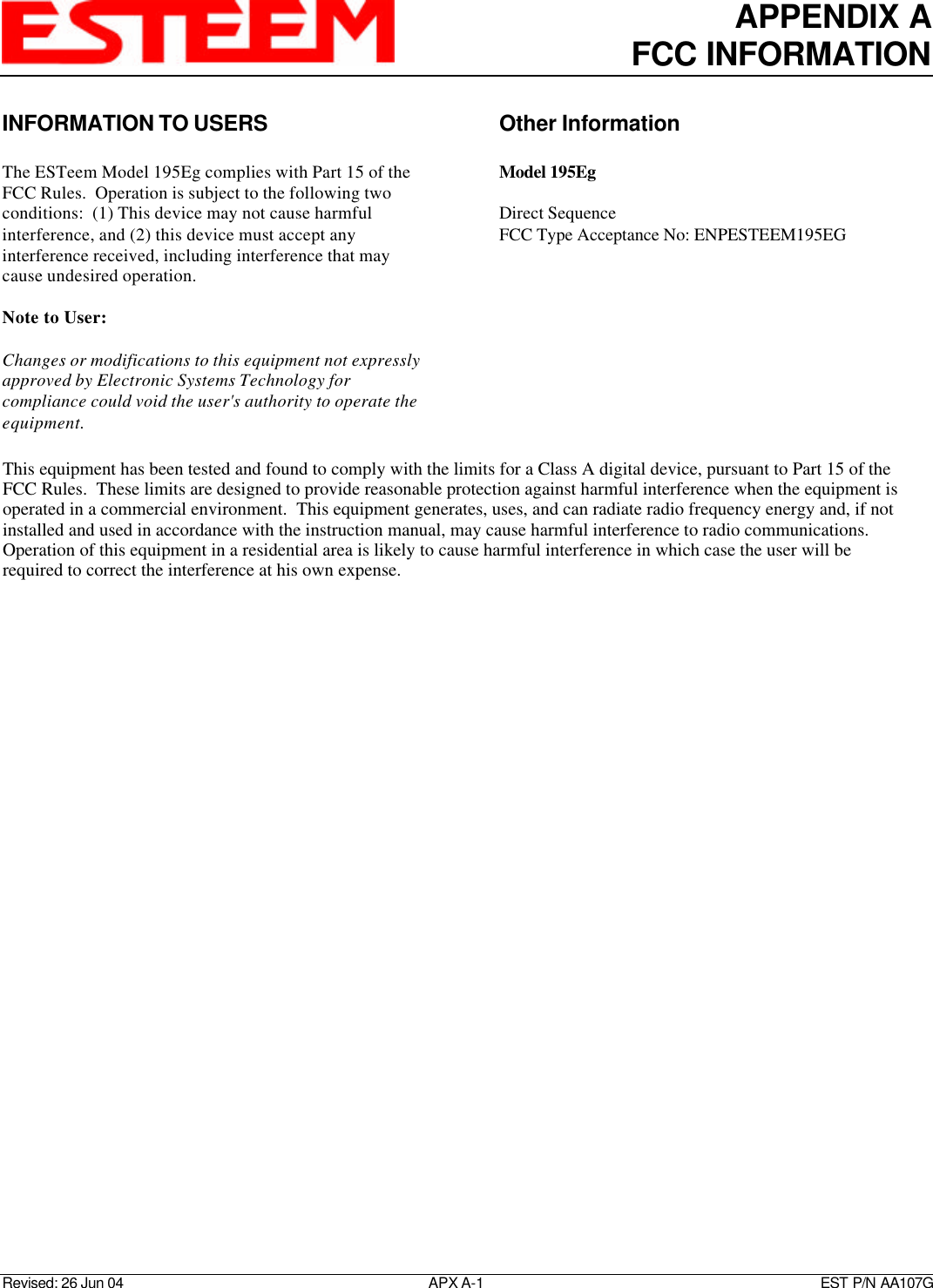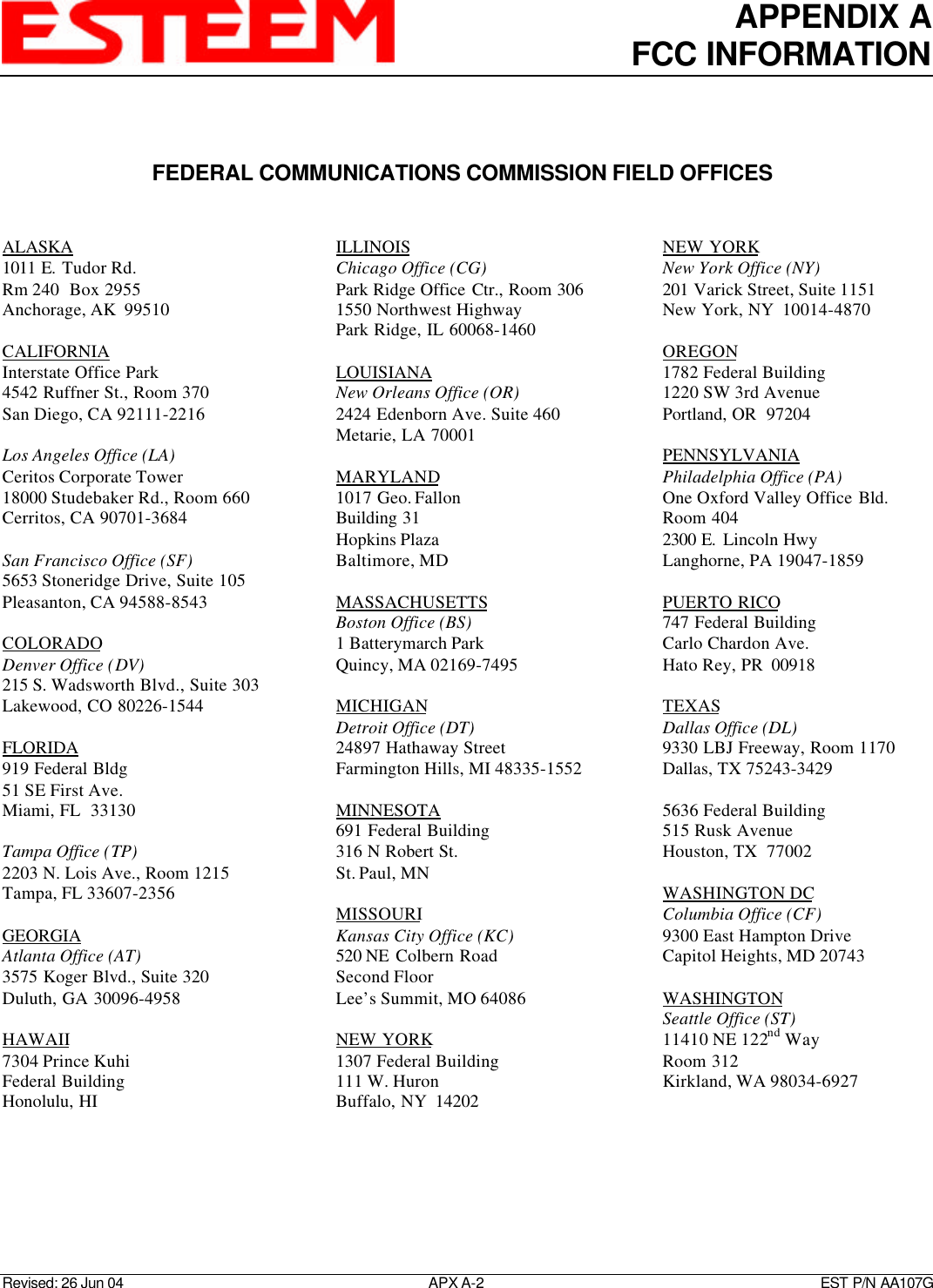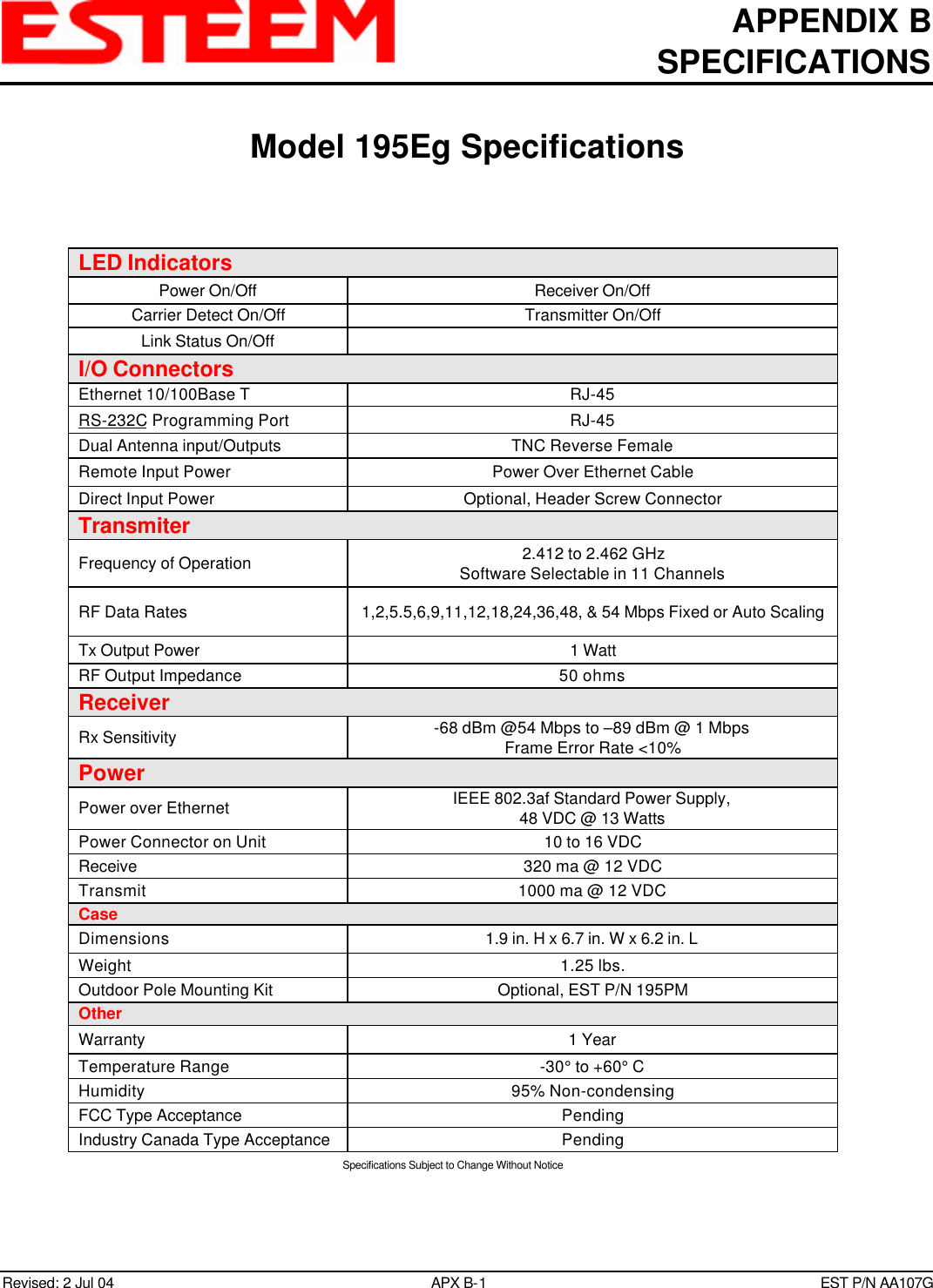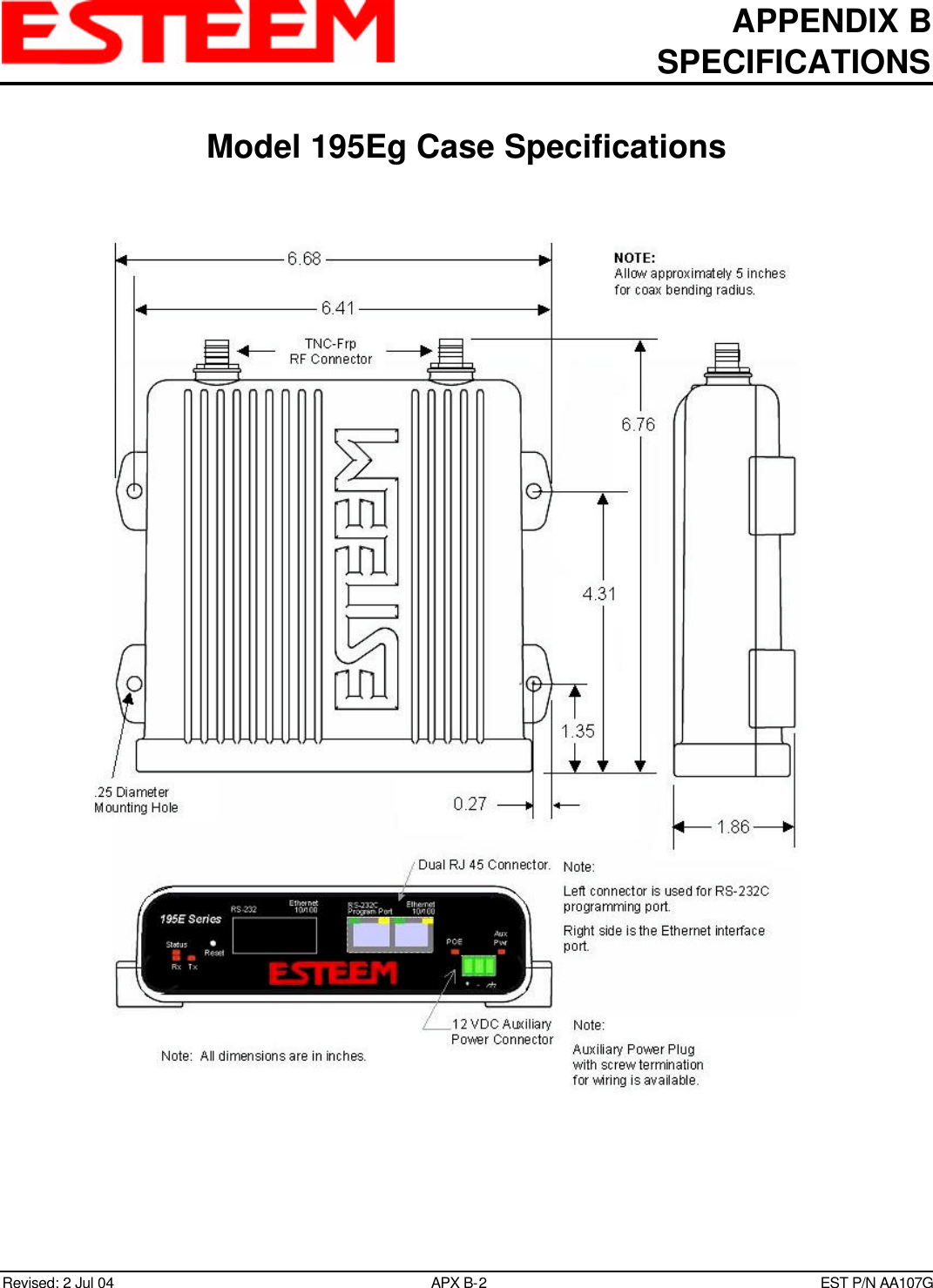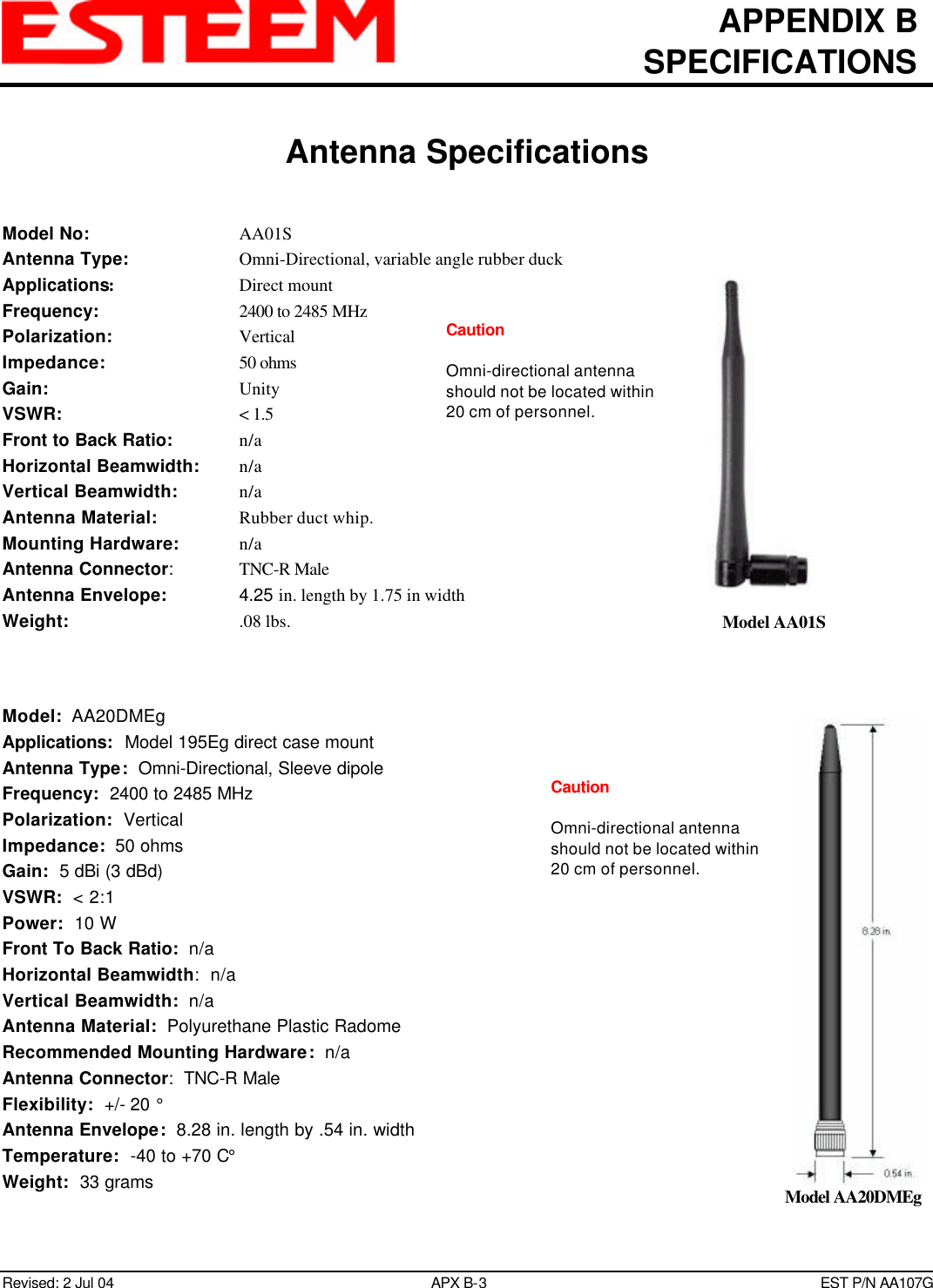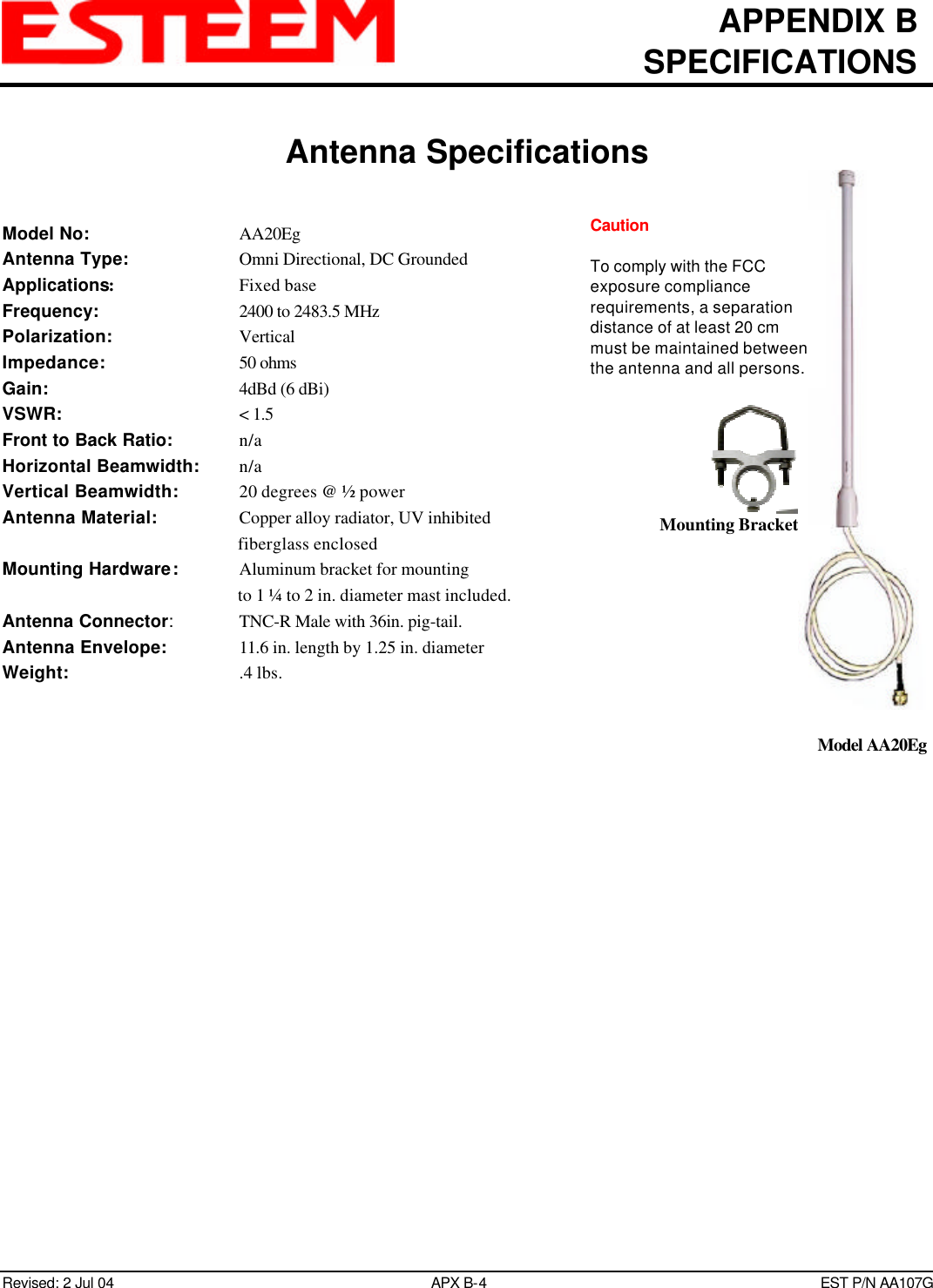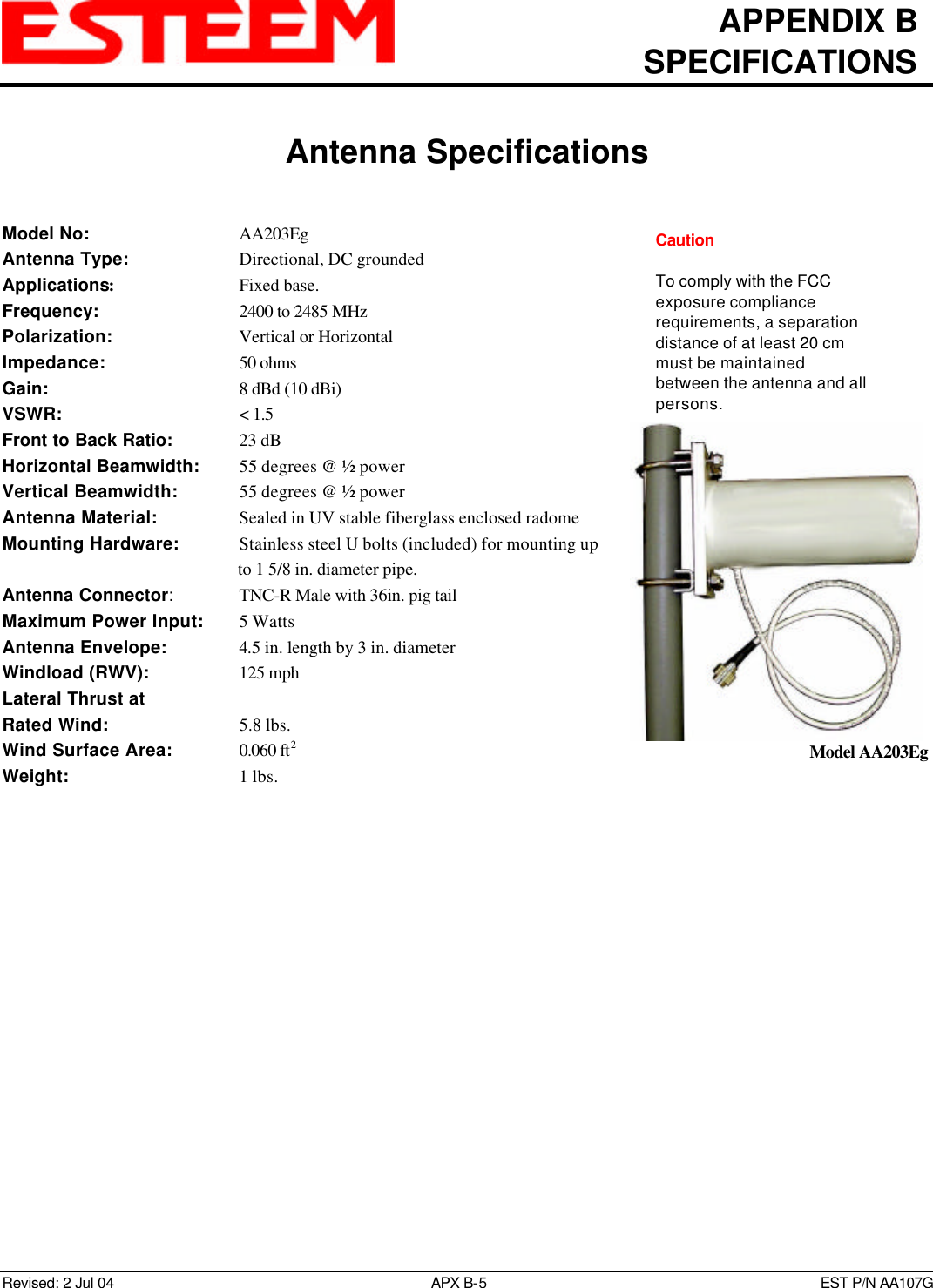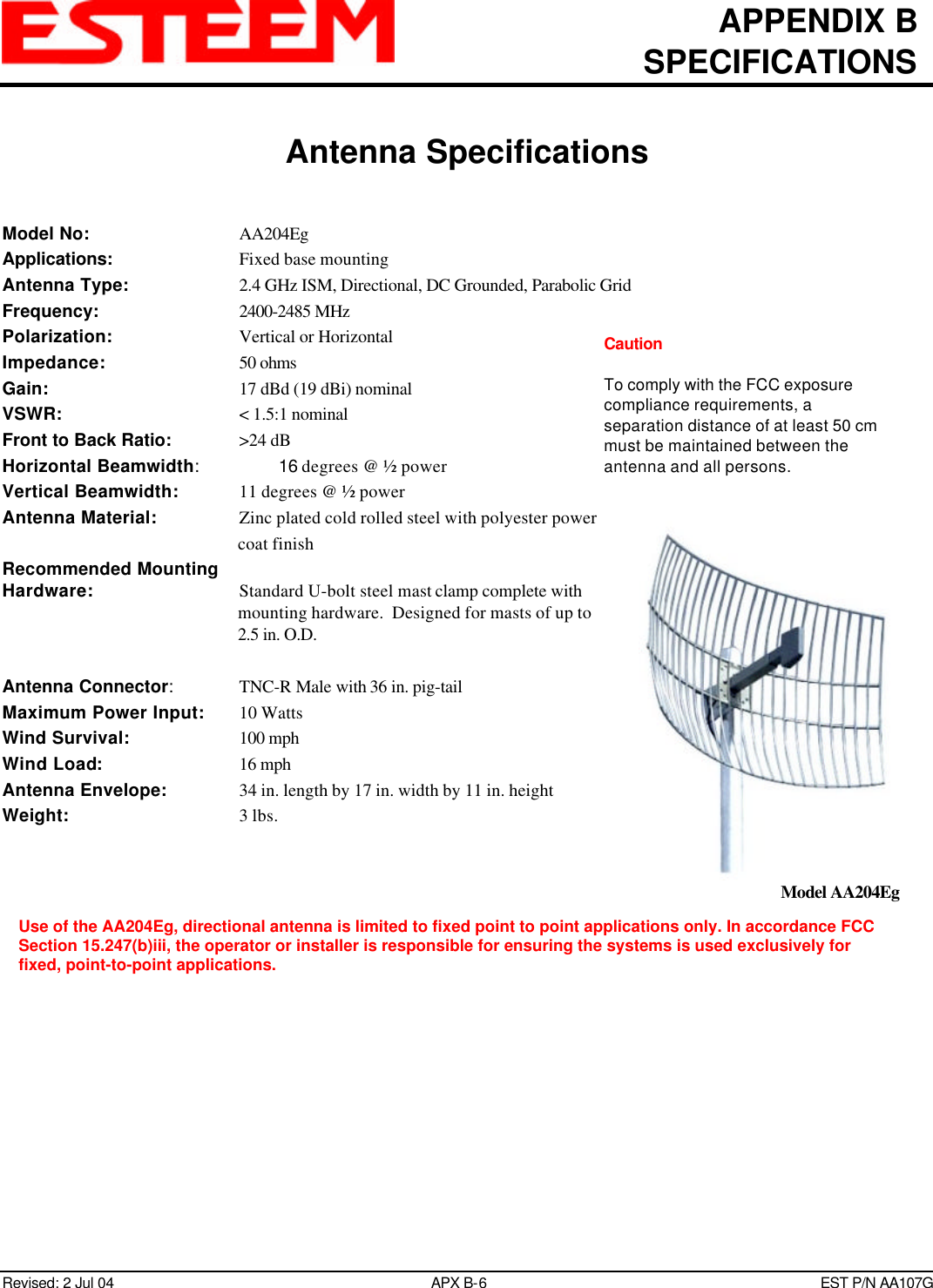Electronic Systems Technology ESTEEM195EG 802.11b/g wireless AP User Manual Chapter 0 Front Cover 195Eg
Electronic Systems Technology 802.11b/g wireless AP Chapter 0 Front Cover 195Eg
Contents
- 1. Users manual part 1 of 2
- 2. Users manual part 2 of 2
Users manual part 2 of 2
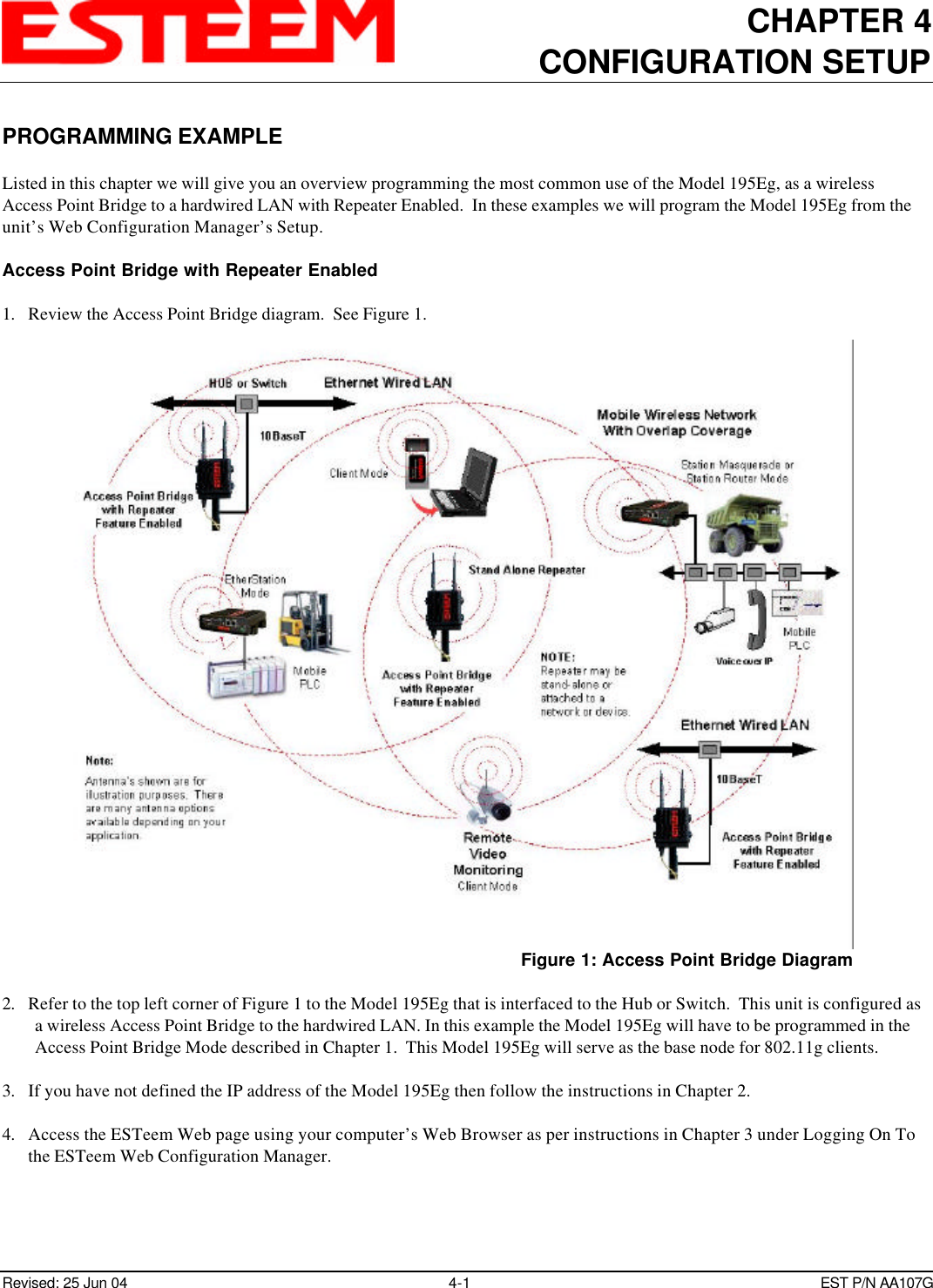
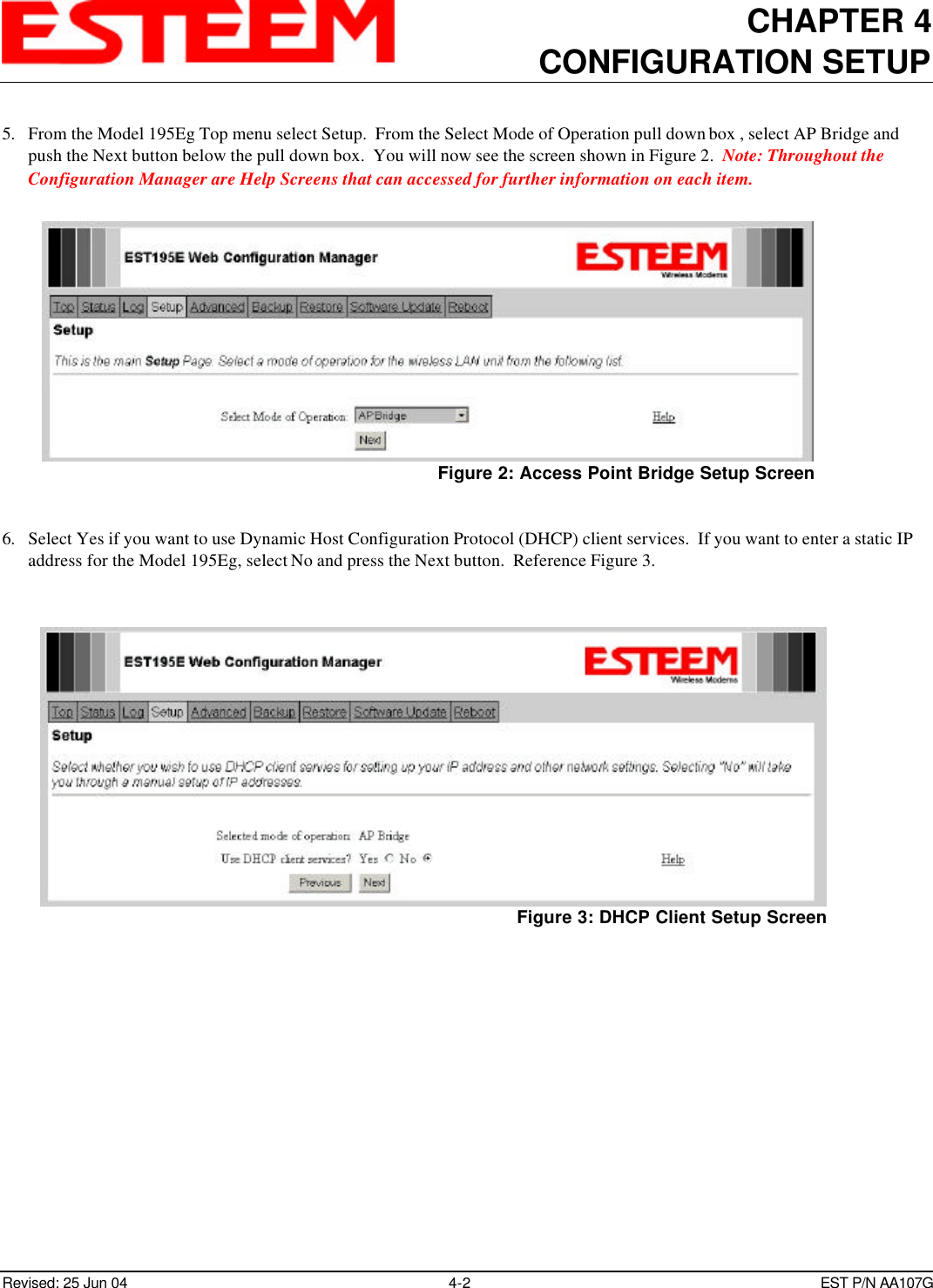
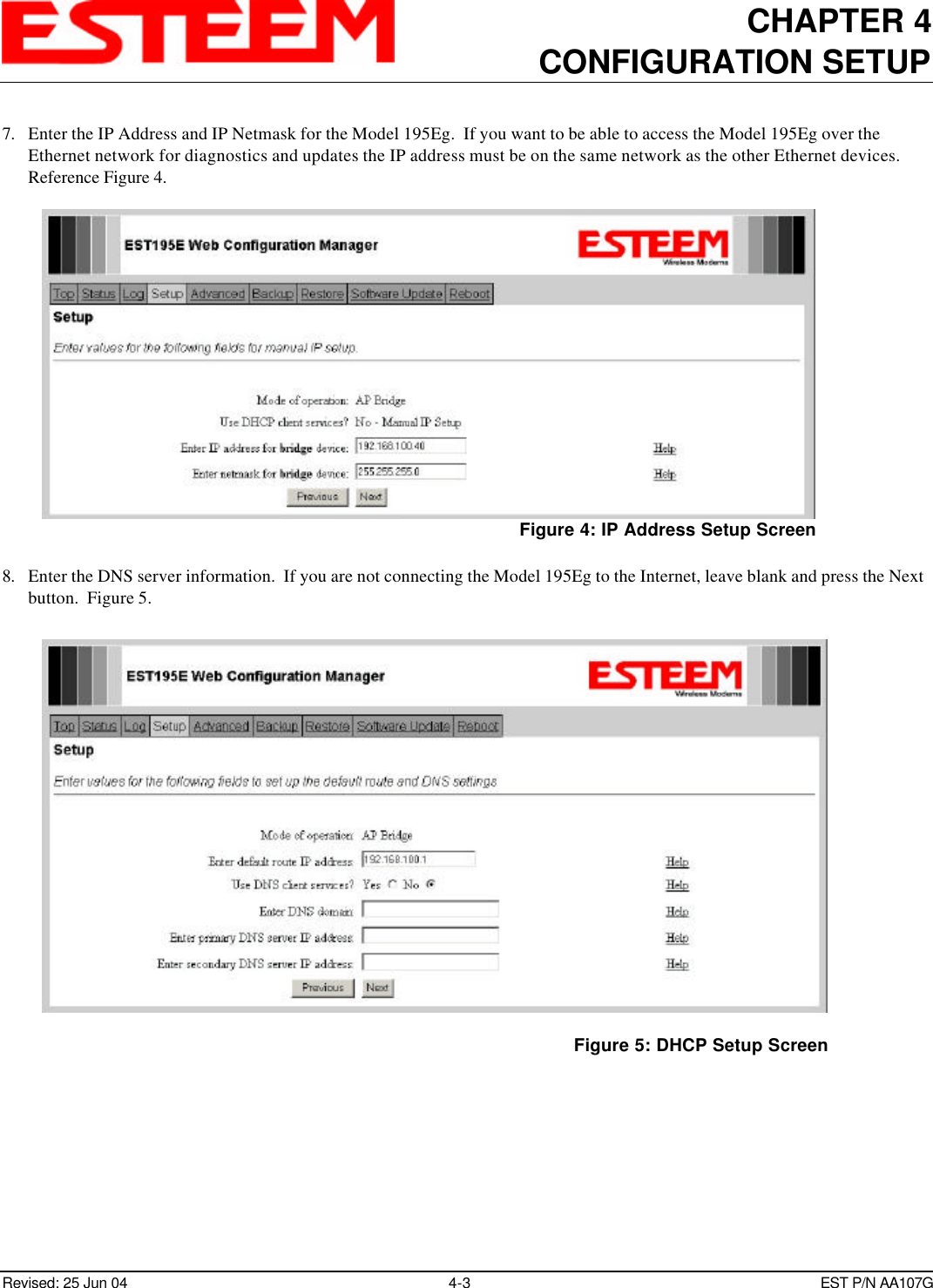
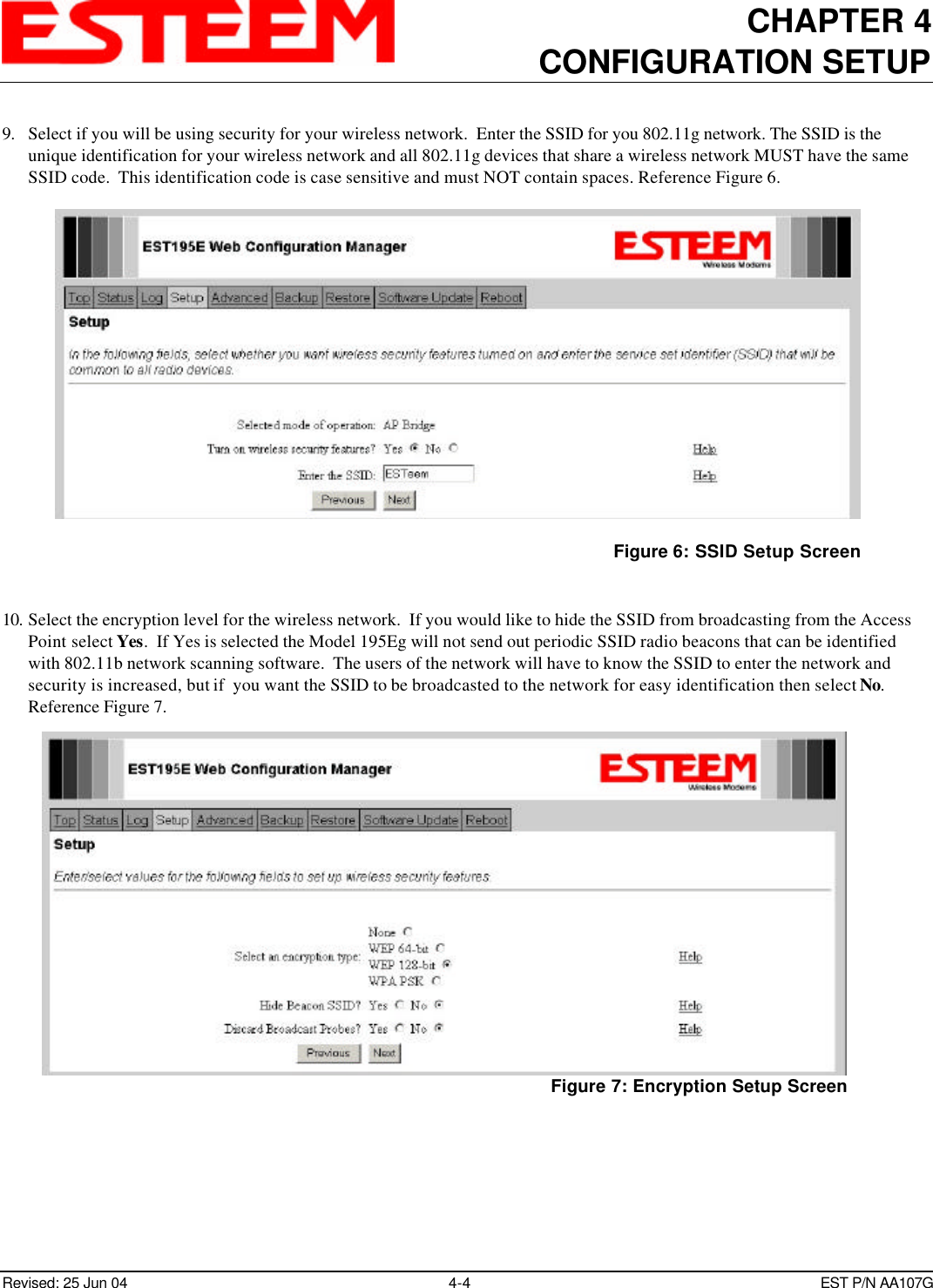
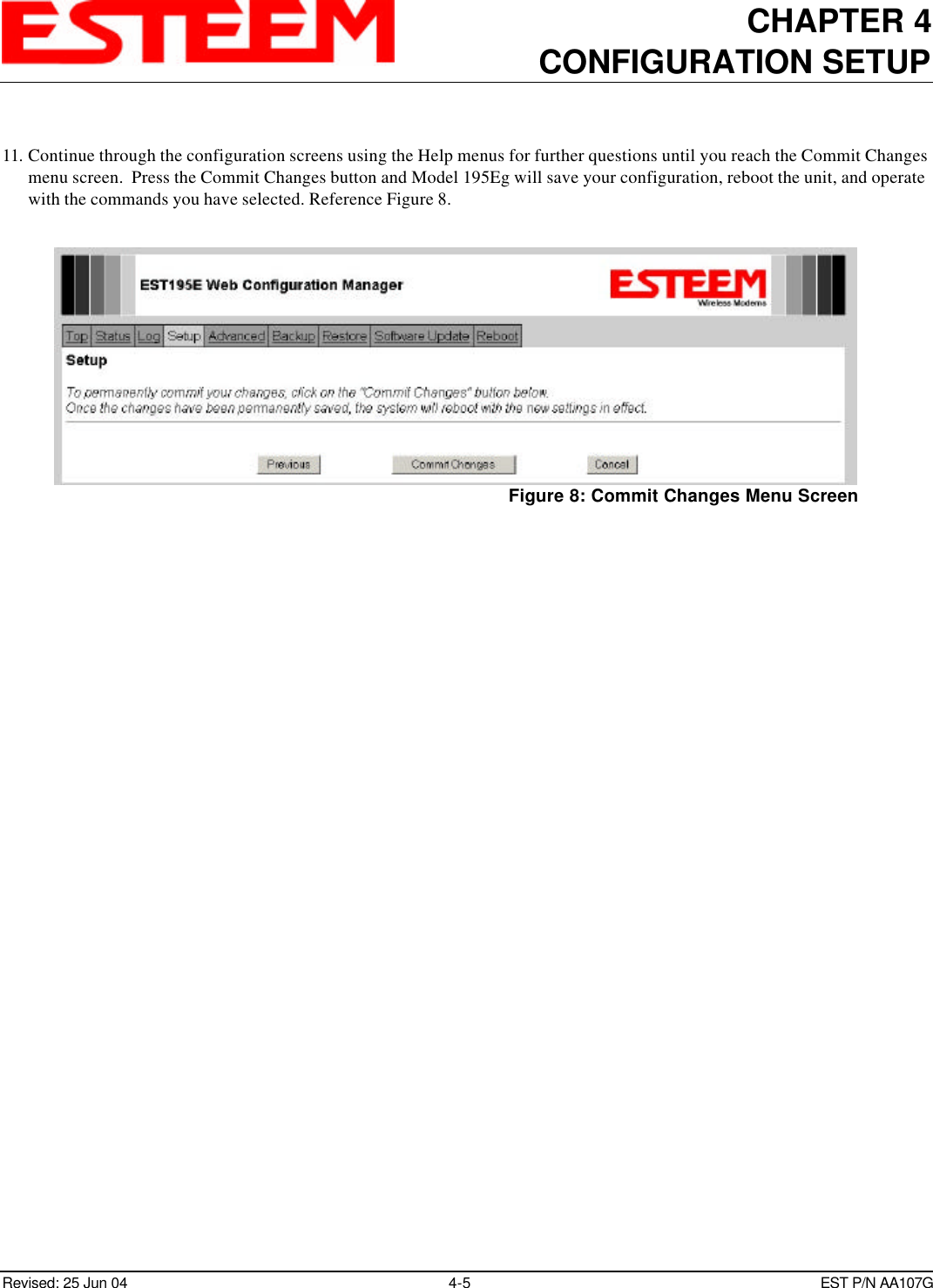
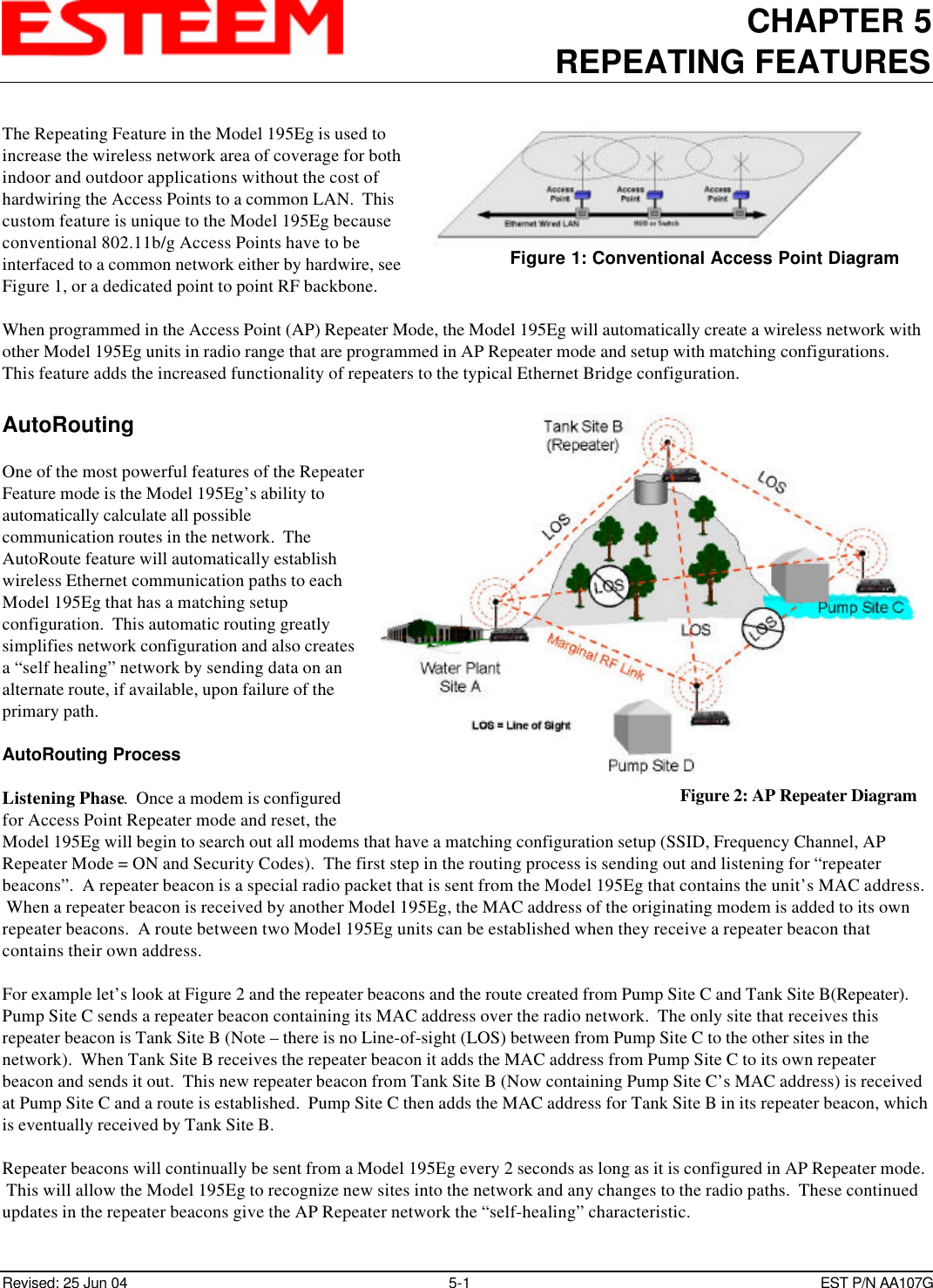
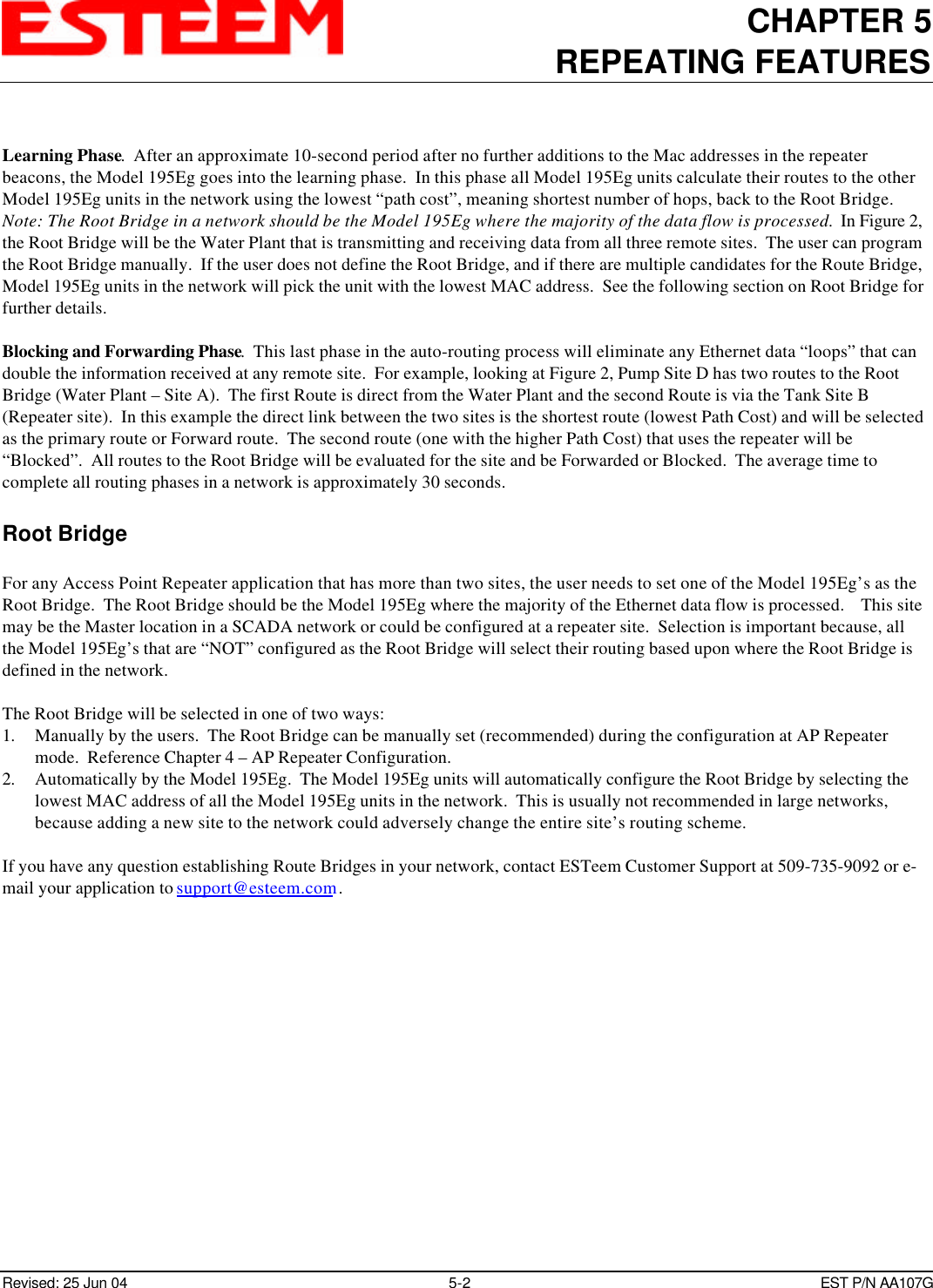
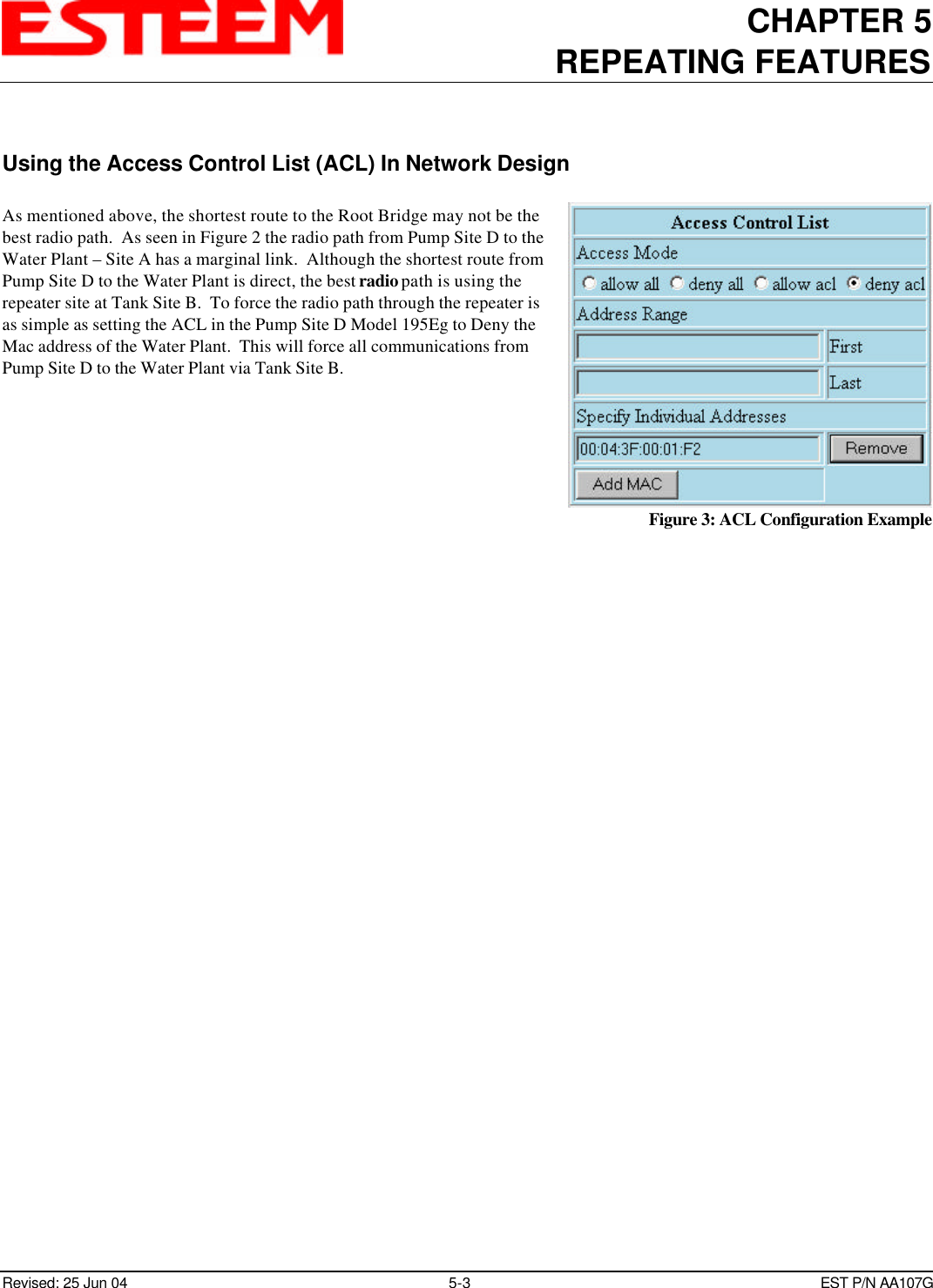
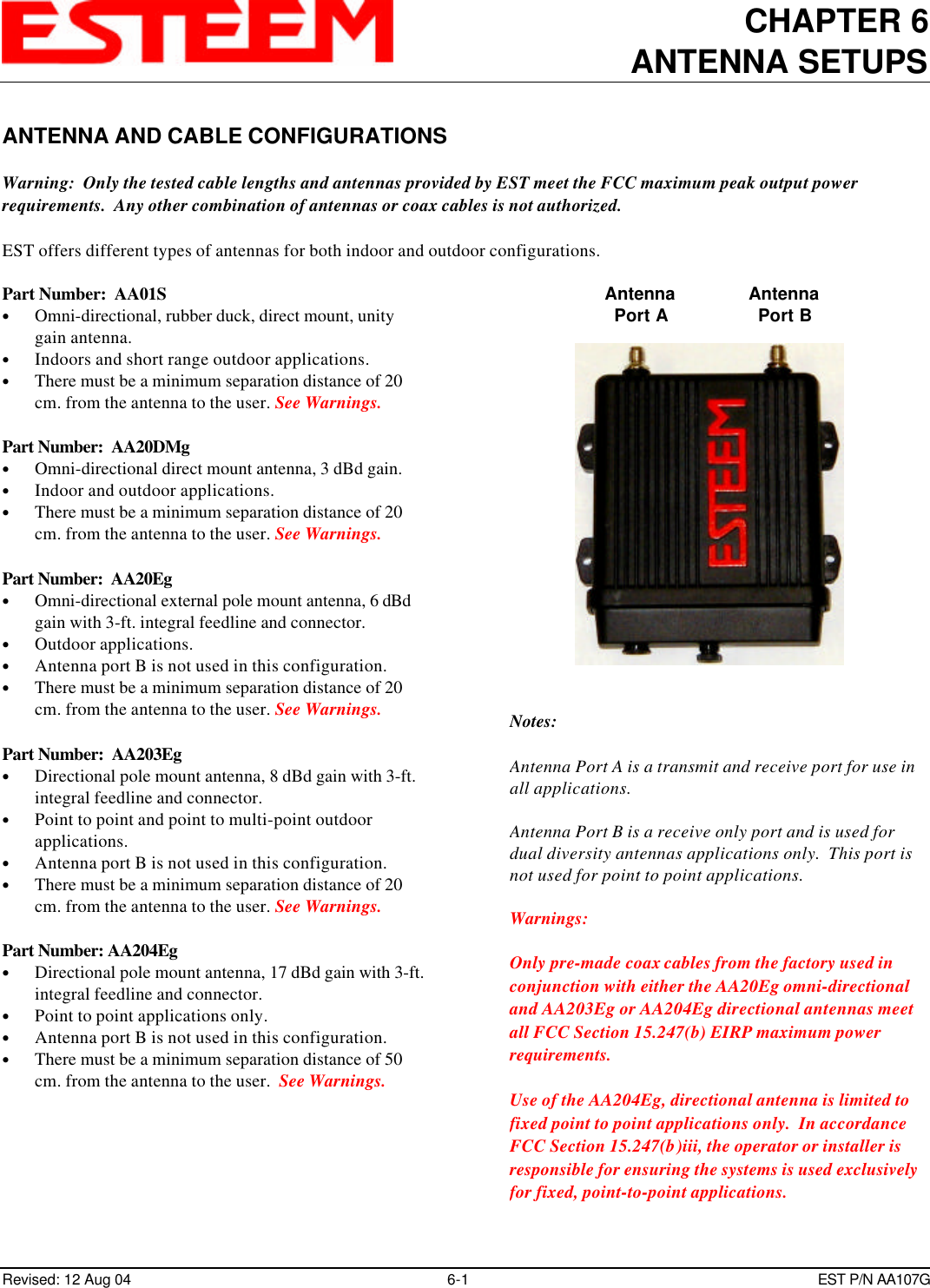
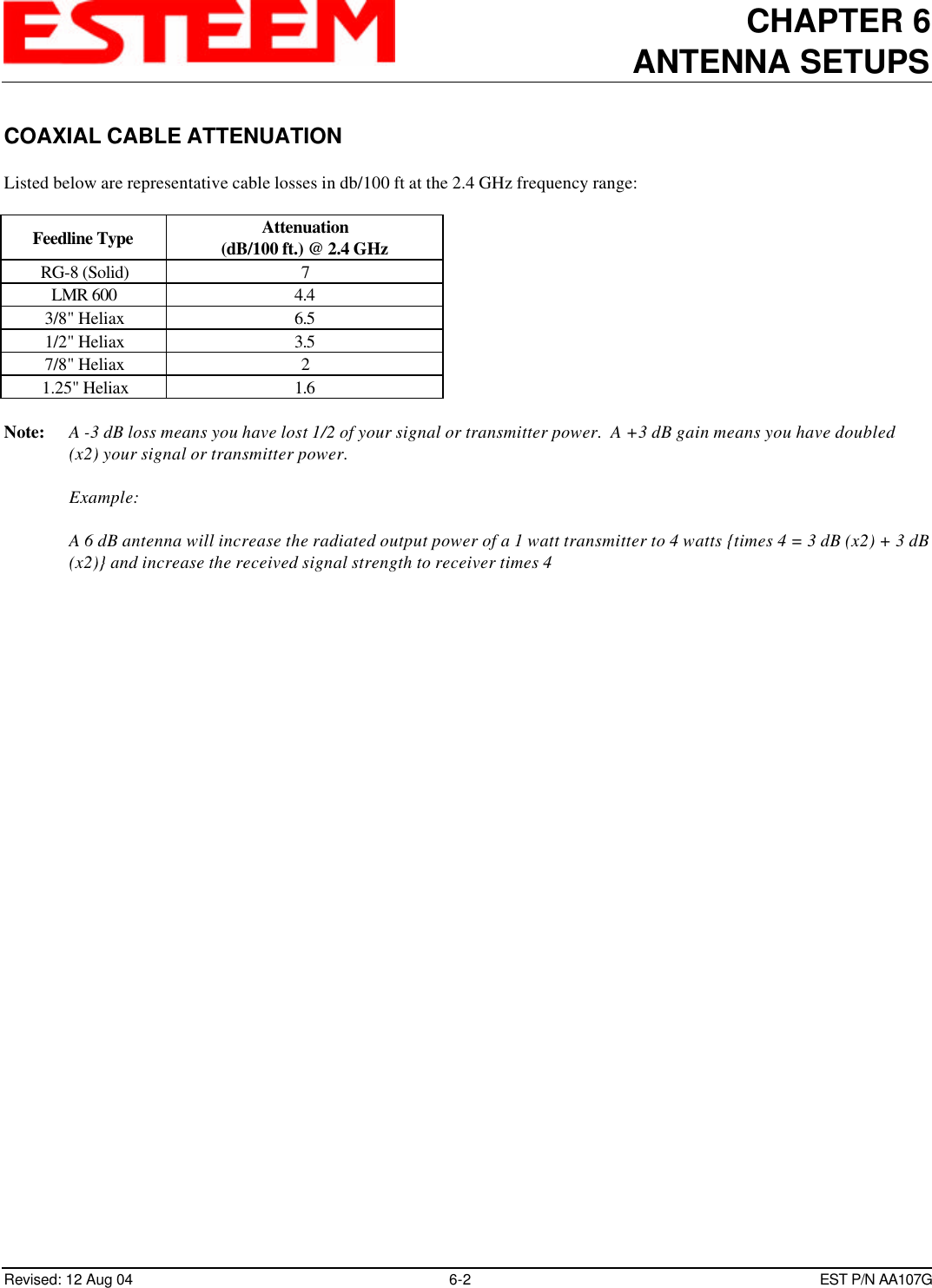
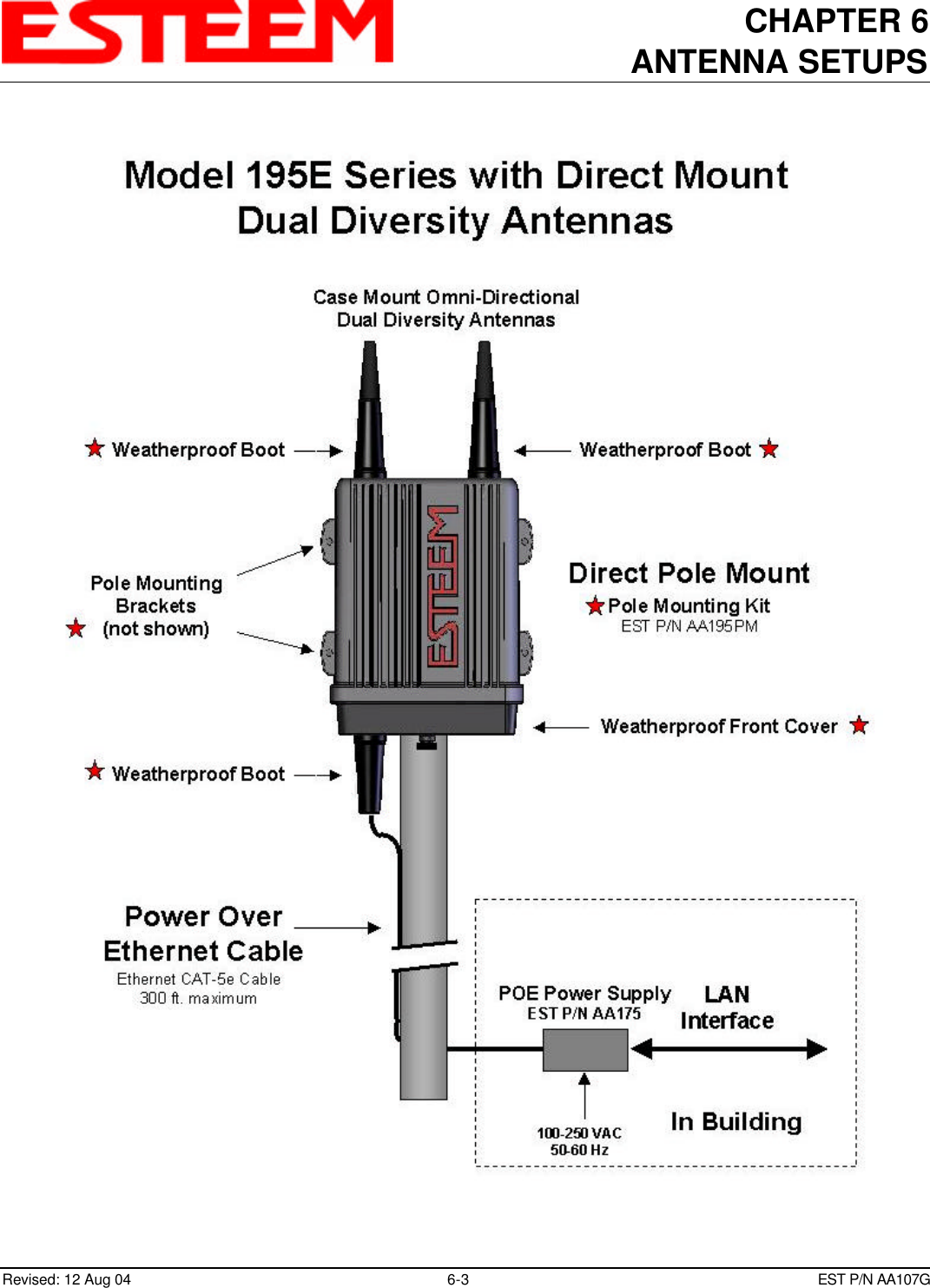
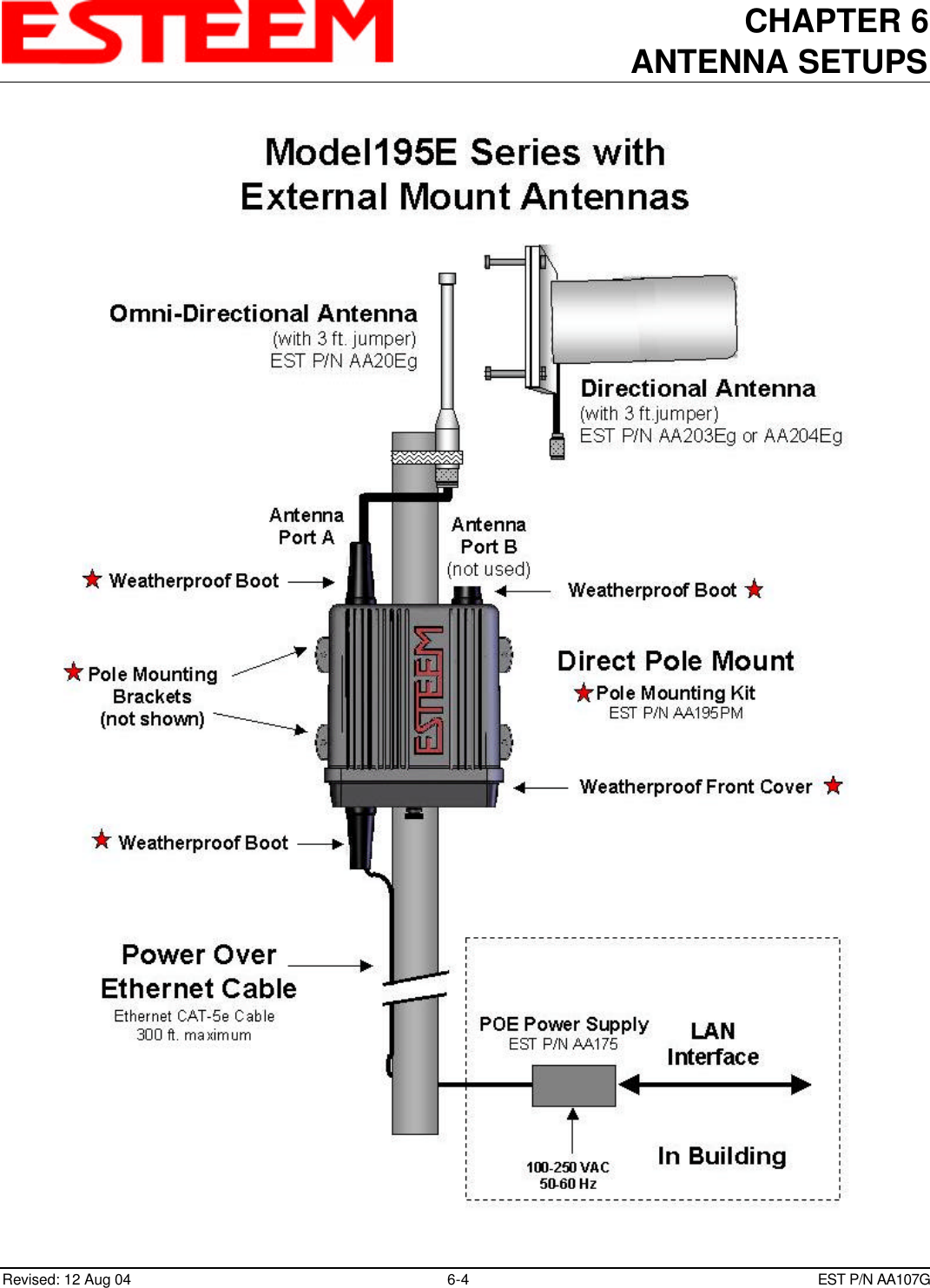
![CHAPTER 6ANTENNA SETUPSRevised: 12 Aug 04 6-5 EST P/N AA107GFRESNEL ZONEThe Fresnel zone shows the ellipsoid spread of the radio waves around the visual line-of-sight after they leave the antenna (seefigure above). This area must be clear of obstructions or the signal strength will be reduced due to signal blockage. Typically,20% Fresnel Zone blockage introduces little signal loss to the link. Beyond 40% blockage, signal loss will become significant. This calculation is based on a flat earth. It does not take into account the curvature of the earth. It is recommended for RF pathlinks greater than 7 miles to have a microwave path analysis done that takes the curvature of the earth and the topography ofthe terrain into account.Fresnel Zone Radius = 72.1 SQRT [(d1d2) / (F(d1 + d2)] UnitsFresnel Zone Radius in feet.d1 and d2 in statue milesF in GHz](https://usermanual.wiki/Electronic-Systems-Technology/ESTEEM195EG.Users-manual-part-2-of-2/User-Guide-466448-Page-13.png)
